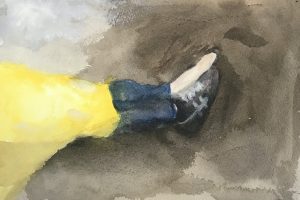With an estimated 840,000 dogs about to take to the road this summer to accompany their owners on holidays, the inaugural Dogs in Cars Safety Week has been launched to raise awareness of the dangers of driving with an unrestrained dog in the vehicle.
Here’s paws for thought – each year in Australia more than 5,000 dogs are injured or killed in auto-related accidents, most as a result of being ineffectively restrained in the car, or not restrained at all.
Recent crash tests by NRMA Insurance* undertaken to urge pet owners to consider the safety of their pets and passengers when travelling in vehicles confirmed that few drivers realise, even at a collision speed of below 20 km/h, an unrestrained pet, sitting in the back seat, can become a dangerous projectile. It can hit the dashboard with enough force to cause serious injury to the dog, driver and other passengers.
“You wouldn’t drive without buckling up your child, and your dog is no different. Securing your pet can save their lives and yours,” says Nestle Purina PetCare Ambassador and emergency and critical care veterinarian, Dr. Lisa Chimes, who is spearheading the Purina Dogs in Cars Safety campaign to reduce accidents and raise awareness. “A properly harnessed dog is a must, not a maybe!”
“An effective harness is critical when travelling with a pet as it keeps the animal safe and restrained and avoids the driver being distracted while driving with the animal moving around inside the vehicle,” says NRMA Insurance Head of Research, Robert McDonald. “In a collision, an unrestrained pet has the potential to injure the driver and other passengers in the vehicle”.
It’s not just crashes that are cause for concern. In sharp turns and heavy braking, an unrestrained dog can become a safety hazard to everyone in the car, including itself. As well, dogs can get excited by various stimuli like other dogs they see out the window, and their unexpected movements can distract a driver, causing more incidents. Improperly or unrestrained dogs can also jump, or fall from utes.
Top safe dog driving tips include:
- In the back!: Just like kids, pets are safest in the back. A dog in the front can distract the driver, and in a crash, the force of the air bags may fatally injure even large dogs. And never drive with your dog in your lap!
- The right restraint: All restraints are not created equal. Some are not designed to withstand the force of sudden stops or turns. Clipping your usual dog lead to a seat belt won’t prevent your dog from being propelled in a crash.
- Ute-sense: By law, dogs must be restrained in the back of a ute, or other open vehicle or trailer. If a dog is not secured with a short lead, that allows him to reach the sides, then he may easily become tangled in it, fall or jump out, causing a potentially fatal injury. If they are riding in the back, remember you must protect your pet from the elements.
- Head and paws in the car:Putting his head out the window may expose the dog’s sensitive eyes, ears and nose to harmful particles of dirt and dust, which can cause infection. He also runs the risk of bumping into objects.
- Are we there yet?:Kids aren’t the only ones who get bored and restless. Dogs too need frequent breaks. Try to stop every two hours for water, a toilet break and a short walk. On alternative stops, let your pet have a run if possible and a sniff of the area for interest’s sake, but don’t let him overheat. Be sure your dog is safe when in a strange place, especially in high traffic areas. Keep him on the lead or in a secure fenced place, which permits dogs off lead.
- Keep it cool: Dogs can rapidly dehydrate and suffer from heat stress during the warmer months, and the inside of cars heat up quickly. Never leave a pet unattended in a car, no matter if the weather is hot or cold.
- Zen-out zone: Tailor the length of the journey to your dog’s personality and how much he can handle comfortably. If your pet is nervous in the car, try spraying lavender or a pheromone which may calm him down and also helps with car sickness. Some dogs react well to calming music, and often closing the windows against strange loud noises zipping by and putting on the air-conditioner may soothe him to sleep.
- Your dog is a backseat driver:Your dog responds to your moods. If you stay cool and collected in the car, your dog will be a relaxed traveller. If you get angry or anxious, he may become frightened and stressed. So keep calm and drive on, remembering to speak to him encouragingly from time to time to keep him happy and secure.






















Add Comment